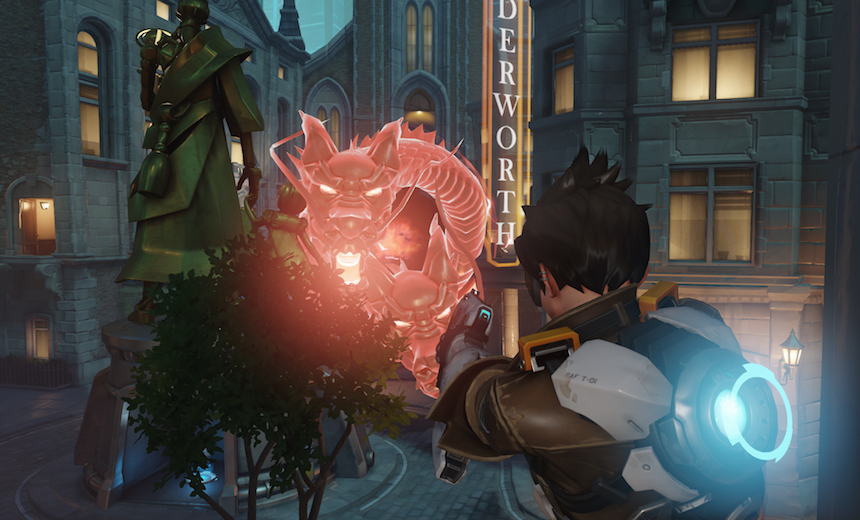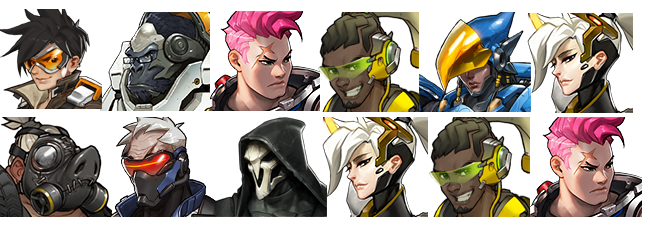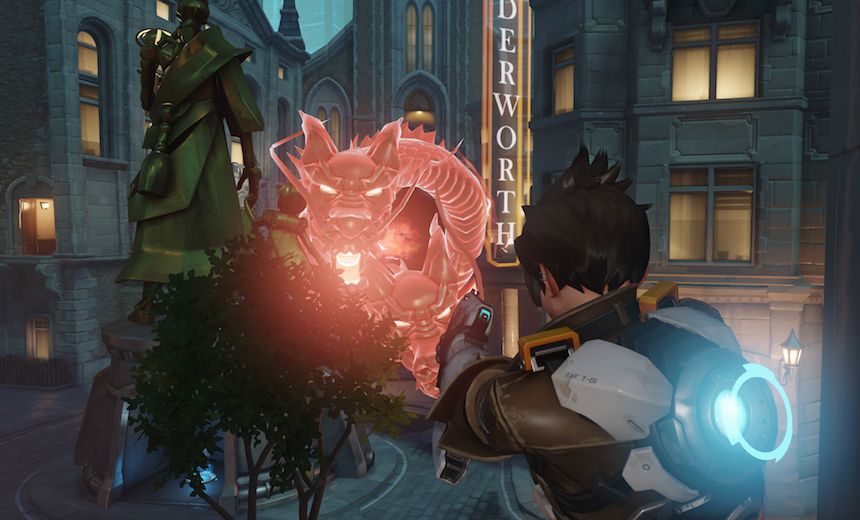
Since Competitive Play has been released, I’ve found myself on teams that struggle to accomplish the goals. Whether it be pushing the payload or capturing a point, teams will often stall out. For this reason, I am dedicating this article to help determine win conditions and execute a plan of action.
What are Win Conditions?
Win conditions are criteria met by your team to guarantee a victory. Using poker as an example, a simple win condition would be to have more chips or money than your opponents at the end of the game. A more complicated win condition would be to play safely to force an aggressive player into making non-optimal bluffs and expending his chips.
Due to the large variety of available win conditions, it is important to create win conditions with reasonable expectations for your team. If your team excels in coordination and lacks individual skill, an optimal win condition may not revolve around winning 1v1s.
Figuring out how is win is half the fight, so let’s take some time to look at how to plan out win conditions.
Baking Victory Cakes
Win conditions can be compared to a recipe. In order to create “victory”, a team must assemble a specific quantity of ingredients and follow a linear path to achieve an end goal. In the scope of Overwatch, these ingredients are the number of players on each team fulfilling specific roles. Roles can be divided into: tank, support, and DPS (a few characters overlap different roles), each offering different strengths and weaknesses to a team composition. Based on the overall makeup, teams will be inherently stronger in certain situations and will steer the flow of the game to expose them to more “winning” scenarios.
Let’s break down the advantages of each class:
|
Role |
Advantages |
|
Tank |
Is strong in sustained team fighting; Usually has very bursty damage; Has some way to mitigate damage from DPS sources |
|
Support |
Is able to buff damage dealers, as well as sustain fights with healing/shielding; Can cover up weaknesses |
|
DPS |
High damage; Good DPS are usually highly skilled players; More room for outplay; Not completely reliant on cooldowns |
Some characters only fill partial descriptions of their roles. For example, Bastion realistically is neither completely DPS, nor completely Tank. However, when accounting for damage estimates, it is fair to include Bastion partially under the DPS category.
Much like baking a cake, the attributes of the composition play an active role in determining the final outcome. Let’s look at this team composition as an example

These are your beautiful and delicious cupcakes
Breaking down this composition, we can see that the cornerstone of this team is its emphasis on buffing DPS and putting them in a position to do damage. How do we know this? We have 3-4 heroes classified as some sort of DPS (Tracer, Pharah, [Offtank] Zarya, [In specific cases] Winston). Furthermore, 3 of these heroes also occupy some sort of support/damage-buff role (Lucio, Mercy, [if used correctly] Zarya). High numbers in roles looking to amplify or increase the total team damage point at a DPS centric win condition. With this, we can start to evaluate the different win conditions suitable to the members of our team.
The simplest win condition would be to rely on the individual skills of Pharah and Tracer to win battles, while having Zarya, Mercy, and Lucio provide healing and shields. A slightly more sophisticated win condition would be to coordinate the peeling ability of Winston to create space for Pharah. Pharah would then provide the majority of the damage on the opponent’s backline positions, while Tracer tries to pick off the opponents’ supports and force non-optimal buff targeting in teamfights.
These recipes may be able to create very delicious and successful cakes, but they are very one dimensional. Only accounting for what ingredients you have leaves no alternatives in case something goes wrong. Opponents actively try to satisfy their own win conditions, targeting areas they feel advantageous over you. This will throw a wrench in your setup by staggering spawns or forcing out important ultimates.
We need a better way to structure our win conditions
Road to Glory
I like to think of win conditions as a GPS on the way to a destination. Instead of focusing my team’s constants, I react more to what the opponent has. A good understanding of your opponent makes moves predictable and opens more routes to counterstratting. Think of the enemies as obstacles in the road and your own composition as the car on the road. You know exactly what your car can do, and you have an idea of the general direction. As roadblocks appear, your win condition should offer resilient detours to the same destination.
Let’s expand on the previous example.

The top team is your ingredients. The bottom team is your roadblocks
As noted, our composition strives in conditions where we can dive into the enemy team, allowing our Pharah to deal damage on the vulnerable backline. The enemy’s win condition would be to utilize their more defensive set up to kite damage, while waiting for picks with Roadhog, or Reaper to flank. This composition could potentially cause a lot of issues if we cannot win the 1v1s. Soldier limits Pharah’s damage output because he presents an immediate threat to her safety in the air. Roadhog is able to hook almost any member of the engage team (Tracer, Winston) and take them out of the fight. Lastly, because our team is so engage heavy, we leave our supports weak to Reaper flanks. As you can see, meeting our win conditions means winning every single one of these 1v1 situations, which is something that cannot always be guaranteed.
But if we expand our win conditions to take into account enemy strengths and weaknesses, we can rely less on variable matchups. Knowing that Reaper will be looking to flank continuously, we can take two paths.
-
Have Tracer specifically look to pick off the Reaper, as the rest of the composition slow pushes to the objective. Have Mercy and Zarya be ready to support
-
Engage the entire team together, putting the Mercy and Lucio at risk, but preventing being picked off one by one.
Although focusing on different strengths, both of these choices reduce the impact that Reaper can have by beating a single player in a 1v1 engagement. The first path augments a DPS’s ability to win individual fights by shifting support onto that character. The second path is more applicable if the team feels uneasy having their Tracer fight the Reaper, but still solves the problem of getting flanked.
A dynamic roadmap-style win condition would sound like this: “Let’s try to pick him off before we engage, or get him low. If we can’t find him, Zarya make sure to shield our Mercy and have Lucio and Winston peel for our Pharah. Engage with Tracer, but if he wraiths in, try to focus him down immediately.” This call recognizes how to account for our teams’ weaknesses, while countering the opponent’s strength. Everyone is assigned a role, and there is a logical step process assigned to meet the goal. The leader offers alternatives to an initial strategy, preventing immediate stall outs. Once the team is made aware of an alternate route, they are better able to react to enemy engages or moves. After the path to the destination is again clear, you can return to the recipe method, preparing for additional obstacles that might come your way.
Upgrading your GPS
The second style of establishing win conditions is not easy to pick up. Because of the large variation in how your opponent plays, the in-game leader is required to have a wide range of experience to react to the opponents’ set up and determine counters. This means sinking time into watching VoDs or becoming more acquainted with the meta. Besides having knowledge, make sure to keep your communications clear with your team. A good leader presents a plan that is easy to follow, while actively listening to information being provided by the team. Knowing when your team is in a good position to execute can do wonders for picking the optimal path to victory.
In summary, try to reason through every game rather than just force your way through. Establish knowledge of what you have and clarify to your team the terms of victory. It is completely fine to use the recipe strategy to do this, as it is probably the easiest way to list out everything. Find your strengths and plan ways to put your team in advantageous situations. Once that is accomplished, gather as much information about the other team as possible. Try to counterstrat the other team by understanding their win conditions and finding ways to react, while still moving forward with your own win conditions. Always have alternate routes in mind. Follow these directions, and I’m sure you’ll be making your own victory cakes very soon.
For more competitive Overwatch news, follow us @GosuOverwatch.

